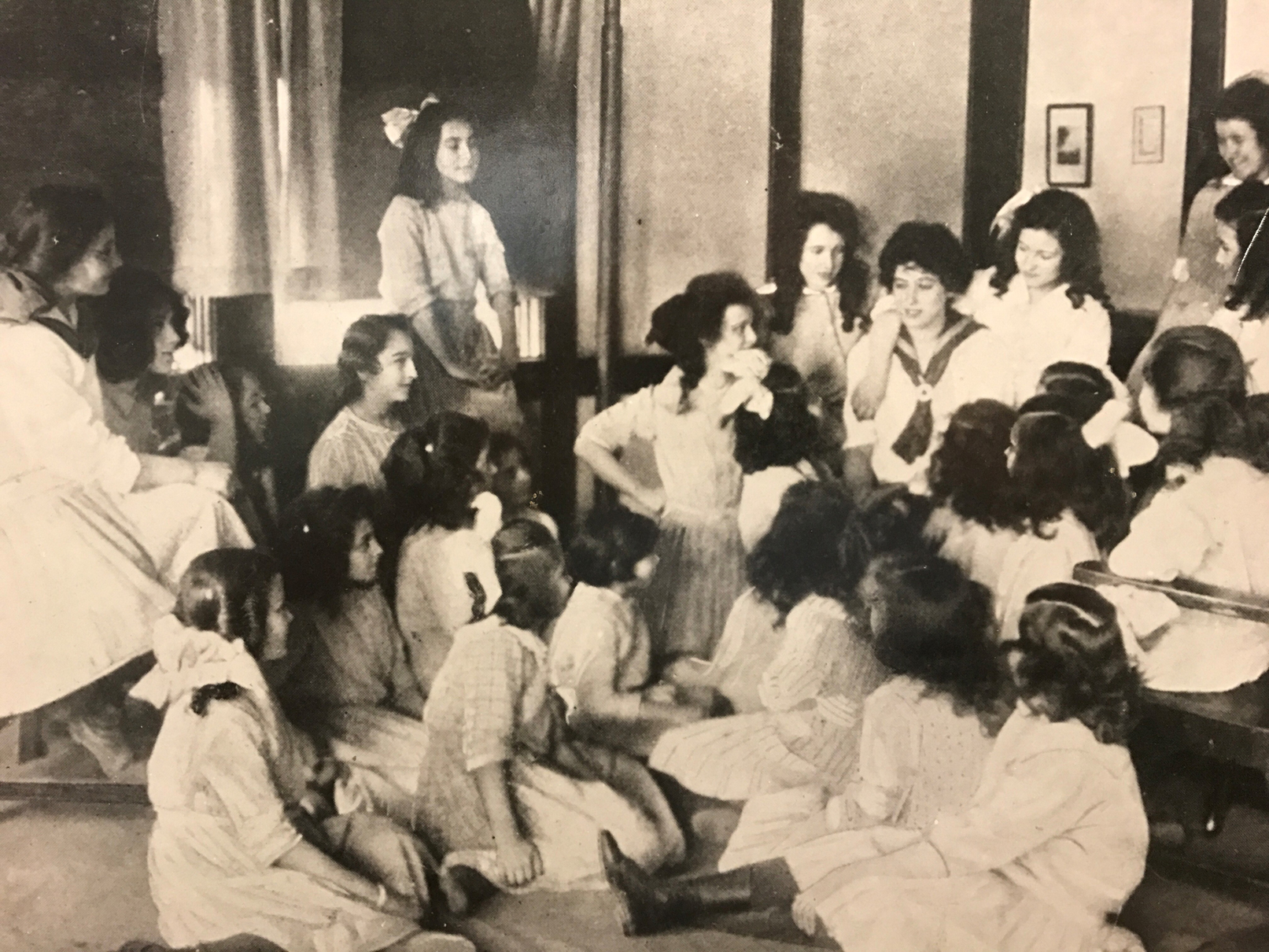As March is Women’s History Month, we are highlighting two pioneering women from JCCA’s past—Mary Boretz and Julia Goldman—who made significant contributions to child welfare.
Mary Boretz
As a child in the early 20th century, Mary Boretz had first-hand experience of being in care. At the age of 12, Boretz was admitted to the Brooklyn Hebrew Orphan Asylum, a predecessor agency of JCCA. She was a top scholar in public school and was later placed in a boarding home, where she received the support and kindness that led to her lifelong work of championing foster homes as an alternative to institutional care.
Boretz became a cottage mother at Pleasantville Cottage School, and, in 1918, the first female head of the Hebrew Sheltering Guardian Society’s Home Bureau, where she expanded the number of foster homes and began to improve the training and esteem of foster families. She managed to increase pay for foster parents, recruited quality foster families, and encouraged pride in their work: “You are as justified in being paid for your work as we for ours. But your contribution is beyond payment—a service to the whole community.”
Boretz fought tirelessly to change entrenched ways of thinking: she managed to stop the 19th century practice of shaving children’s heads and encouraged the acceptance into care of those with serious medical conditions, believing that a good and understanding home could be found for almost any child. She also knew the importance of and lobbied for more frequent visits from biological parents to their children in care.
Boretz continued as head of the Home Bureau until 1945, even as she was bedridden with a severe kidney ailment after 1927. A friend in the field who worked with her for many years said, “What she could do from her bed, no two of us with four feet could accomplish.” She inspired her staff with her dedication and leadership, and educated her Board. After her retirement from the Home Bureau, she continued as a consultant to JCCA and UJA-Federation, and was a member of the executive committee of the Child Welfare League of America until her death in 1949. She was, as another friend put it, “a total blend of professional interest and personal values.”
Julia Goldman
In the early 1900s, though child care institutions like Pleasantville Cottage School usually had a consulting psychologist or psychiatrist, their role was primarily to diagnose disturbed children and reject them. No treatment was provided because little was known about treating troubled children.
As a result of the upheavals of World War I, the beginning of the Great Depression, and the work of Sigmund Freud, mental illness and psychological problems came to more prominence, particularly in regard to children. In 1925, two psychiatrists at Mt. Sinai hospital directed a study of troubled children in care. A young psychologist and psychiatric social worker, Julia Goldman, was asked to set up a “Mental Hygiene and Child Guidance Department” at Pleasantville Cottage School. Although intended as a temporary assignment to determine how many of these youngsters needed psychiatric services, Julia remained at Pleasantville for the next 16 years.
Greeted initially with hostility and suspicion, Goldman maintained a low profile while living in a children’s cottage. Gradually, as both children and staff got to know her, they began to confide in her and request her help. At the end of her first year, a psychologist, three psychiatrists, and two social workers had joined her. Together, they formed the first psychiatric clinic established in any American child care institution and the only one anywhere, at that time, available both day and night.
Her work pioneered practices still in effect today, like the training of Cottage parents (now known as Milieu Counselors) to help in treatment and the use of a sports program as an important therapeutic activity. Pleasantville Cottage School became famous nationally as a treatment resource for children.
In 1930, Goldman became the first female director of Pleasantville Cottage School, continuing her work with children in this new role. She encouraged more socialization and coeducation of boys and girls, more informal and comfortable clothes for girls, the implementation of weekly bus trips into NYC for home visits, and the creation of a new music program and school band. Other changes included vocational training for girls in the form of millinery and dental assistant work, and a floriculture and agriculture training program that served as a therapeutic outlet and also provided produce for the institution.
After nine years as Pleasantville’s director, Goldman was recruited to set up a Child Guidance Department for New York City, but her achievements are still evident in JCCA’s residential programs’ extraordinary work with children and families today.
